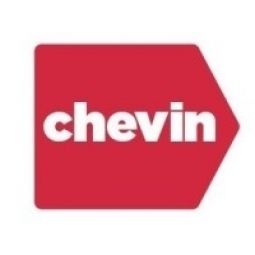Technology Category
- Functional Applications - Computerized Maintenance Management Systems (CMMS)
- Functional Applications - Fleet Management Systems (FMS)
Applicable Industries
- Education
- Transportation
Applicable Functions
- Maintenance
Use Cases
- Fleet Management
- Transportation Simulation
About The Customer
Beacon Mobility is a growing conglomerate of companies that operate 20 brands across 23 states. With nearly 70 years of experience, the company provides safe, reliable, and cost-effective mobility solutions to communities, school districts, special education programs, and regional transit authorities. Beacon Mobility is relied upon by these entities to transport people safely and on time. The company manages a fleet of over 12,000 vehicles and assets, making it a significant player in the mobility solutions sector.
The Challenge
Beacon Mobility, a conglomerate of companies operating 20 brands across 23 states, was facing challenges in managing its fleet of over 12,000 vehicles and assets. The company, with nearly 70 years of experience in providing mobility solutions, was in need of a centralized system to manage its fleet across all its brands. The lack of a unified system was causing inefficiencies and difficulties in managing maintenance tasks, workload, stock management, compliance, and more. The company was also in the process of implementing the system across all its brands in the US, which posed additional challenges.
The Solution
Beacon Mobility turned to FleetWave, a fleet management solution, to address its challenges. The company has been using FleetWave since 2022 and is in the process of implementing it across all its brands in the US. FleetWave provides a centralized database that collects data points from all six companies within Beacon Mobility, enabling efficient fleet management. Additionally, Beacon Mobility is utilizing the FleetWave Technician app, which allows technicians to manage maintenance tasks, workload, stock management, compliance, and more. The app has been rolled out across 70+ garages to over 400 technicians, fleet team members, and various operations partners.
Operational Impact
Quantitative Benefit

Case Study missing?
Start adding your own!
Register with your work email and create a new case study profile for your business.
Related Case Studies.

Case Study
Airport SCADA Systems Improve Service Levels
Modern airports are one of the busiest environments on Earth and rely on process automation equipment to ensure service operators achieve their KPIs. Increasingly airport SCADA systems are being used to control all aspects of the operation and associated facilities. This is because unplanned system downtime can cost dearly, both in terms of reduced revenues and the associated loss of customer satisfaction due to inevitable travel inconvenience and disruption.

Case Study
IoT-based Fleet Intelligence Innovation
Speed to market is precious for DRVR, a rapidly growing start-up company. With a business model dependent on reliable mobile data, managers were spending their lives trying to negotiate data roaming deals with mobile network operators in different countries. And, even then, service quality was a constant concern.

Case Study
Digitize Railway with Deutsche Bahn
To reduce maintenance costs and delay-causing failures for Deutsche Bahn. They need manual measurements by a position measurement system based on custom-made MEMS sensor clusters, which allow autonomous and continuous monitoring with wireless data transmission and long battery. They were looking for data pre-processing solution in the sensor and machine learning algorithms in the cloud so as to detect critical wear.

Case Study
Cold Chain Transportation and Refrigerated Fleet Management System
1) Create a digital connected transportation solution to retrofit cold chain trailers with real-time tracking and controls. 2) Prevent multi-million dollar losses due to theft or spoilage. 3) Deliver a digital chain-of-custody solution for door to door load monitoring and security. 4) Provide a trusted multi-fleet solution in a single application with granular data and access controls.

Case Study
Vehicle Fleet Analytics
Organizations frequently implement a maintenance strategy for their fleets of vehicles using a combination of time and usage based maintenance schedules. While effective as a whole, time and usage based schedules do not take into account driving patterns, environmental factors, and sensors currently deployed within the vehicle measuring crank voltage, ignition voltage, and acceleration, all of which have a significant influence on the overall health of the vehicle.In a typical fleet, a large percentage of road calls are related to electrical failure, with battery failure being a common cause. Battery failures result in unmet service agreement levels and costly re-adjustment of scheduled to provide replacement vehicles. To reduce the impact of unplanned maintenance, the transportation logistics company was interested in a trial of C3 Vehicle Fleet Analytics.

Case Study
3M Gains Real-Time Insight with Cloud Solution
The company has a long track record of innovative technology solutions. For example, 3M helps its customers optimize parking operations by automating fee collection and other processes. To improve support for this rapidly expanding segment, 3M needed to automate its own data collection and reporting. The company had recently purchased the assets of parking, tolling, and automatic license plate reader businesses, and required better insight into these acquisitions. Chad Reed, Global Business Manager for 3M Parking Systems, says, “With thousands of installations across the world, we couldn’t keep track of our software and hardware deployments, which made it difficult to understand our market penetration.” 3M wanted a tracking application that sales staff could use to get real-time information about the type and location of 3M products in parking lots and garages. So that it could be used on-site with potential customers, the solution would have to provide access to data anytime, anywhere, and from an array of mobile devices. Jason Fox, Mobile Application Architect at 3M, upped the ante by volunteering to deliver the new app in one weekend. For Fox and his team, these requirements meant turning to the cloud instead of an on-premises datacenter. “My first thought was to go directly to the cloud because we needed to provide access not only to our salespeople, but to resellers who didn’t have access to our internal network,” says Fox. “The cloud just seemed like a logical choice.”







